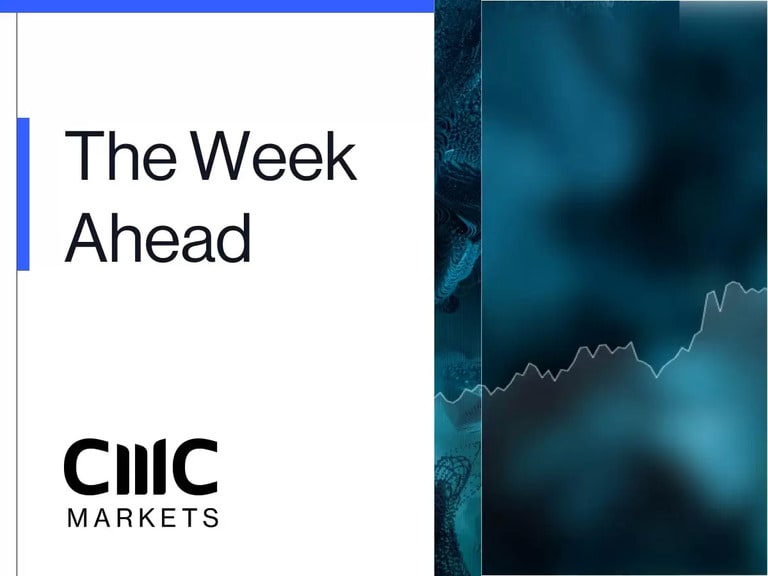For all of August and most of the summer, attention has been fixed on this month’s central bank rate meetings for clues as to how close we are to the end of the current central bank rate hiking cycle, as we look towards year end.
The Federal Reserve would like to have you think it will raise rates again before the end of this year, while the Bank of England is currently priced for the possibility of another two rate increases due to much higher core inflation.
This week we saw the Reserve Bank of Australia, as well as the Bank of Canada, kick off an important 3 weeks for central bank policy meetings, with investors set to hang on to every nuance of this month’s meetings to determine the next move when it comes to interest rates.
The RBA kicked things off on Tuesday by keeping rates unchanged at 4.1%, while maintaining its guidance that inflation remains elevated, and the central bank will do whatever is required to return inflation to target. The central bank also maintained its forecast that inflation is unlikely to return to target of between 2% and 3% by late 2025.
The Bank of Canada also mirrored this narrative in keeping its own central rate unchanged at 5%, while pledging to act further if required.
As we look towards next week’s ECB meeting, opinion is split on whether the governing council will follow this narrative, or whether they will go for one more rate hike of 25bps. The hawks on the governing council appear committed to such a move, with the likes of Bundesbank President Joachim Nagel, as well as Isabel Schnabel, along with the likes of Pierre Wunsch of the Belgian Central Bank, and Klaas Knot of the Netherlands central bank.
The hawkish nature of German central bankers may come across as surprising given the state of the German economy, which is currently on its knees, as shown by this week’s horrific factory orders data for July, and the further deterioration in last month’s PMIs as services followed manufacturing into contraction territory.
This pathology comes from Germany’s historical fear of inflation and is unlikely to change given that German CPI is currently at 6.3%, although it has fallen from its peaks. Even so, when faced with such awful economic data across the entire economy, one must question what might prompt a little bit of self-reflection on the part of the inflation hawks.
On the more dovish side we have the likes of the National Bank of Greece’s Stournaras, and Italy’s Visco pushing for restraint. ECB President Christine Lagarde’s comments at the July press conference were particularly telling when she undermined the central message of optionality in keeping the ECB’s options open when it comes to a September hike, and being data dependant, by concluding that she doesn’t think that the ECB has more ground to cover when it comes to further hikes.
If this week’s data are any guide perhaps wiser heads will prevail with a pause seemingly the most likely outcome next week.
Lagarde’s recent tone suggests that given the nature of recent economic data the ECB could well be done when it comes to rate hikes, and that the next move could well be a rate cut, if the data continues to look ugly, although when that might happen is anybody’s guess.
Assuming we get no change next week from the ECB, then it’s more than likely that we could see the Federal Reserve go down the same route with another pause to their own rate hiking cycle, if recent comments from Fed governor Christopher Waller are any guide, although recent strong economic data might suggest the Fed might need to move in November, especially after this week’s strong ISM services numbers.
US policymakers do have one more rate hike in their forward guidance with a terminal rate of 5.6% by year end, with markets currently pricing that for November, assuming it happens at all.
If we get no change from the ECB, as well as the Federal Reserve, that will likely take the pressure off the Bank of England to hike again, even though market pricing is for at least one or possibly two more hikes this year.
The dynamics here are especially interesting given the pricing on the number of UK rate hikes over the summer has been much higher than other central banks. We’ve already seen pricing on that shift considerably from where we were over a month ago when the market was pricing the eye-watering notion of a terminal rate of over 6%. This never seemed remotely credible given the inevitable consequences for financial stability and the housing market of such rate moves.
Inevitably this pricing has started to come in and could come in some more given recent comments from senior Bank of England officials.
In the last 2 weeks we’ve heard from Bank of England Deputy Governor Ben Broadbent, as well as Chief Economist Huw Pill arguing that monetary policy is already restrictive enough, and with 14 consecutive rate hikes behind them that would suggest a pause is well overdue.
This appears to be the direction Governor Andrew Bailey is leaning as well if his comments this week to MPs are any guide. This suggests that senior Bank of England officials are softening the market up for a rate pause this month, an outcome markets seem reluctant to price.
The biggest challenge for the bank is communicating this shift to markets without tanking the pound. Based on previous experience that might be a tall order, however given what’s happening right now a pause would be the right move to make, and then reassess in November when they update their economic projections.
As far as the data is concerned the argument for a pause outweigh the risks of hiking further, however the fear is they may decide to hike again as they attempt to compensate for being late into the hiking cycle.
Certainly, a period of policy stasis from central banks wouldn’t go amiss right now, even allowing for the risks of rising oil prices which threaten to make inflation a lot stickier than it could be. That said it’s hard to see how more rate hikes would help a consumer being squeezed by higher energy prices, as both factors suck demand out of the economy.
Even though markets aren’t currently pricing a series of rate pauses this month, that’s what we might get, especially when you look at what is driving the current sticky nature of price inflation.
We’ve already found out that the UK isn’t the international outlier when it comes to GDP, after the recent recalculations from the ONS, and the only reason inflation here is higher than elsewhere is because of the ridiculous energy price cap, which has served to keep core inflation higher than it should be and could well continue to do so with oil prices on the rise again.
With the Swiss National Bank and the Bank of Japan also set to meet in the same week as the Fed and the Bank of England, the next few weeks may have the potential to spring a few surprises, with perhaps central banks adopting policy stasis as a default position given the uncertainty around how much of a lag there is when it comes to recent increases in interest rates.
While central banks received a lot of criticism for being asleep at the wheel when it came to recognising that inflation wasn’t as transitory as they thought, they are now running the risk of overcompensating in the other direction, and hiking too aggressively to combat a problem which already appears to be dissipating.
The only outlier to that is the Bank of Japan which could tweak its policy settings further when it comes to YCC, as it looks to combat a problem of an ever-weakening currency and high core inflation. This could be an area where we might see further volatility given that USD/JPY is once again approaching the 150.00 area.
Disclaimer: CMC Markets is an execution-only service provider. The material (whether or not it states any opinions) is for general information purposes only, and does not take into account your personal circumstances or objectives. Nothing in this material is (or should be considered to be) financial, investment or other advice on which reliance should be placed. No opinion given in the material constitutes a recommendation by CMC Markets or the author that any particular investment, security, transaction or investment strategy is suitable for any specific person. The material has not been prepared in accordance with legal requirements designed to promote the independence of investment research. Although we are not specifically prevented from dealing before providing this material, we do not seek to take advantage of the material prior to its dissemination.






